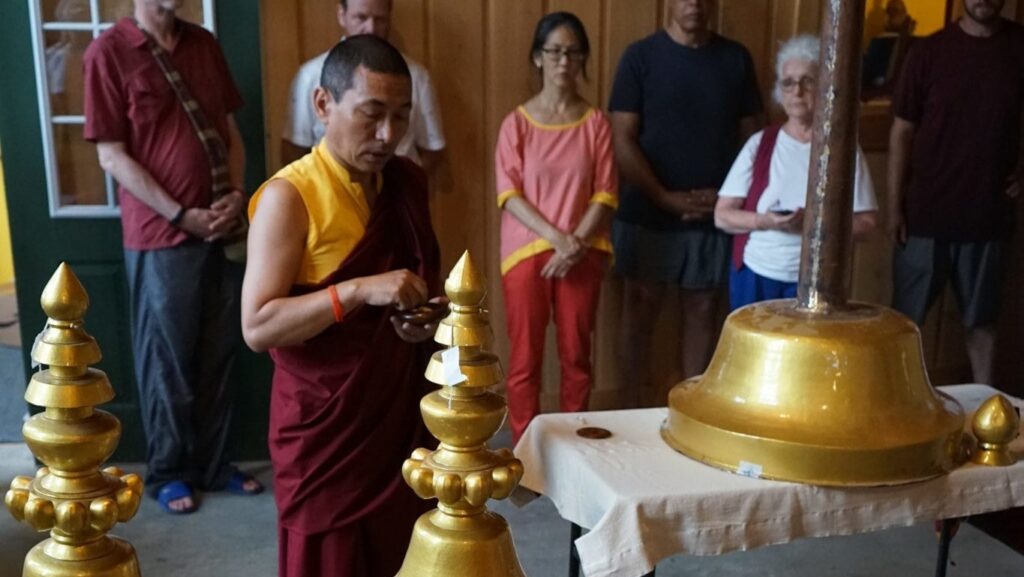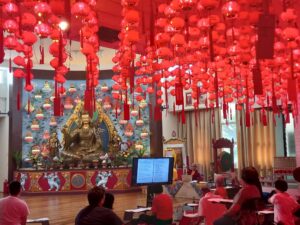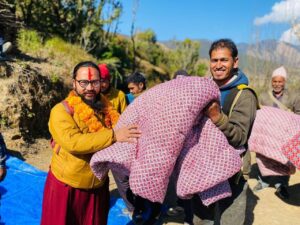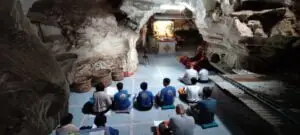In July 2019, on Guru Rinpoche Day, Tulku Migmar Tsering consecrated the sertok that was erected atop the main shrine barn at Gomde New York. The local sangha and retreatants were fortunate to observe and participate in this process under the guidance of Tulku-la and Lama Michael Friedman.
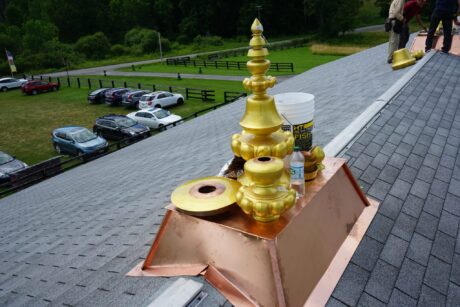
Sertok Graces the Main Shrine Barn at Gomde New York
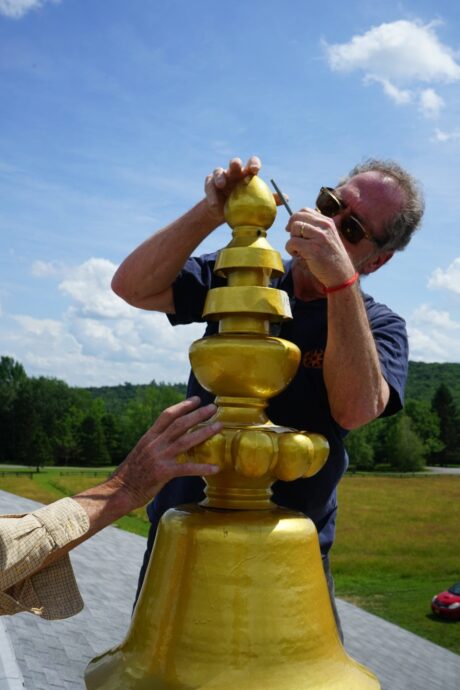
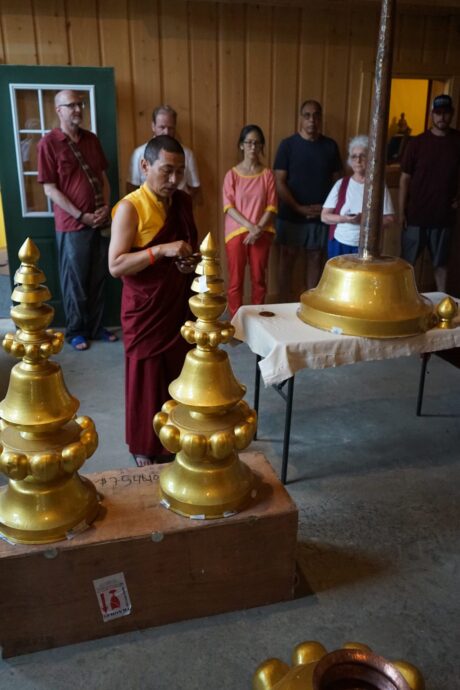
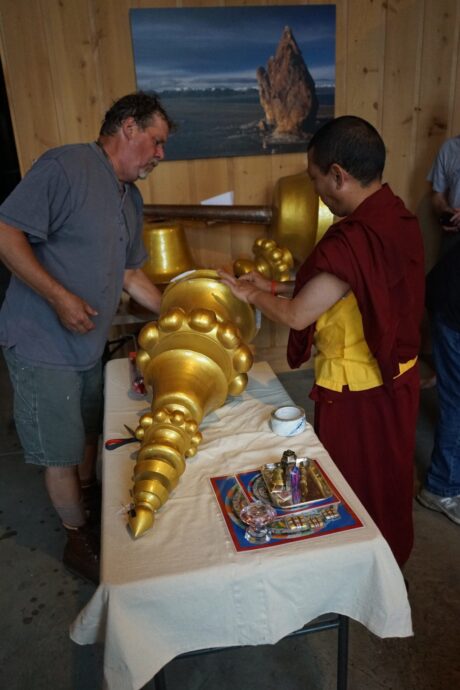
What is a Sertok? What Does it Symbolize?
Indian Buddhist temple architecture often featured golden umbrellas atop a turreted finial. Gupta era architects often crowned monuments with amalaka fruit shaped disks from which they hung banners. Some historians suggest that the shape came to symbolize the seat of a deity. The current Mahabodhi temple in Bodh Gaya remains a classic example of this type of pinnacle. When we look at this ornament we may observe some resemblance to later Bhutanese development of the sertok, or golden pinnacle or umbrella. Numerous sutras such as “The Noble Sūtra of the Great Vehicle “The Teaching on the Extraordinary Transformation that is the Miracle of Attaining the Buddha’s Powers” describe the great merit from offering “precious umbrellas” and victory banners atop stūpas.
Excerpt from Sertok: The Golden Pinnacle of Architecture by Karma Phuntsok
Bhutanese architecture has evolved through many centuries by adapting to the local surrounding and also integrating various elements from the architectural traditions of neighbouring areas. Bhutan’s architectural practices, thus, combine structural stability, functionality, cultural and natural coherence, and spiritual significance. The sertok (གསེར་ཏོག་) turret, or more literally, the golden pinnacle, is the uppermost element of certain types of Bhutanese architecture.
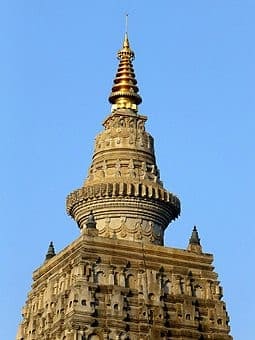
Although there is no clear-cut rule about which buildings can possess a sertok, they are generally built on the top of temples and dzongs; buildings that have an eminent religious significance such as housing the Kanjur canon, which contains the words of the Buddha. Temples that cannot afford a proper sertok have as its pinnacle a gyeltsen (རྒྱལ་མཚན་) or victory banner made from metal such as copper or bronze. Today, most temples have sertok and even non-religious dzong structures and some palaces have a sertok.
A temple, in general, represents a mansion of enlightened deities, and a mandala embodying the enlightened qualities of the Buddha. From its foundation to its pinnacle, the temple is imbued with spiritual significance and religious meanings. As such, a temple from the traditional Bhutanese religious and architectural perspective is not complete without a proper sertok, as it symbolises the ultimate point of wisdom that penetrates dharmadhatu, the state of reality that is analogous to space.
Sertok: Gilded Gold
The sertok, as its name suggests, is a copper turret gilded in gold. Its shape carries deeper symbolic meaning and is usually of a size proportionate to the building. The lower part is a square shape in the form of a miniature mansion, and is normally made of wood. It has many layers of designs including norbu bagam, or stack of jewels, a pema or lotus, a chötse or stack of books, and many other motifs. The roof, which is slanting and corrugated, has animal faces on the four corners among other forms. The pinnacle rises up in a cone shape with several designs including a lotus and vase, surmounted by a jewel.
Once finished, many religious and precious objects are installed in the sertok so as to infuse it with spiritual power and magnificence. A sokshing (སྲོག་ཤིང་) pillar, generally made from juniper, is inserted vertically in the centre, painted red with many mantras on it. Also known as ganjira (གན་ཇི་ར་) the installation of sertok is considered a major achievement in traditional Bhutan. Elaborate religious ceremonies, which are conducted during the consecration of a temple, are carried out to install a sertok. Thus, in the biographies of many of Bhutan’s past rulers and religious figures, the installations of sertok on major temples are listed among their achievements. The sertok crowns temple and dzong structures marking the building on Bhutan’s landscape as sites of important religious activities.
Author Karma Phuntsho is a social thinker and worker, the President of the Loden Foundation and the author of many books and articles including The History of Bhutan. This piece was edited by Ariana Maki and published by the Bhutan Cultural Library in 2017,


